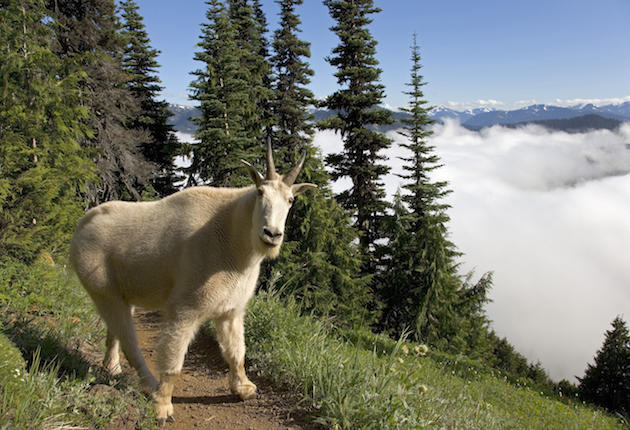A popular hiking trail in Idaho had to be closed recently due to aggressive mountain goats. Several hikers were threatened and one injured when goats became too comfortable around humans, leading to the trail’s temporary but indefinite closure.
Lehigh Valley Business reported a Clark Fork trail’s closure Tuesday after a mountain goat attacked a hiker. One person was bit, with reports of goats attempting to charge or head-butt other visitors. Boise Weekly named the trail as the Scotchman’s Peak trail and the biting as taking place in June 2015. The bit person reportedly received multiple stitches.
Tourists had been routinely feeding the alpine creatures as early as 2014, when Idaho Department of Fish and Game had to initiate a campaign to deter goat feeding. No word was given whether the bitten or threatened hikers had personally attempted to feed the goats.
The multiple incidents led the U.S. Forest Service to close the trail until the goats change their behavior.
“The temporary closure is intended to allow time for the goats to find other sources of food beyond handouts provided by hikers and to reduce their willingness to approach humans,” Idaho Panhandle National Forests spokesman Jason Kirchner said.
Idaho Fish and Game’s mountain goat biology information says the state’s goats typically move lower on the mountains in the winter to avoid bad weather, starting in October when snow begins to fall. The annual movement may lead to more human encounters as the shaggy beasts leave the mountaintops in favor of sheltered lowlands. Lack of forage in the winter may also lead the animals to fall back on their old habits and search out hikers for handouts.
Idaho hikers should be thankful they got away with minor injuries and displays of aggression. A man was gored to death by a mountain goat in 2010 in Washington state’s Olympic National Park. Bob Boardman, 63, of Port Angeles was stabbed by a 370-pound billy’s horn in the left thigh and bled to death.
The goat had followed Boardman and fellow hikers for roughly a mile prior to goring him, staying as close as five to six feet from the humans the entire way.
The billy was shot the same day as the goring, but showed no signs of disease or other causes for the attack. Habituation to people led the animal to not view humans as threats there as well.
Cover Image: Thinkstock

